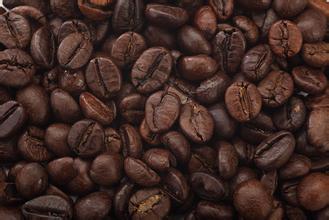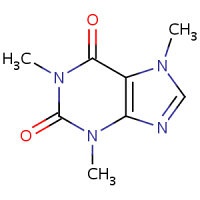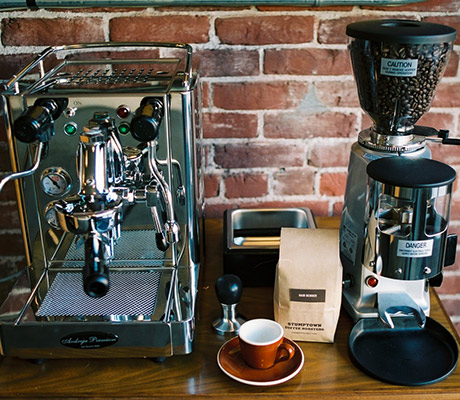Is it caffeic acid at high altitude? The higher the Haibo, the better the quality of the coffee. Where does the acid in the coffee come from?

Effect of altitude on Coffee Flavor
The influence of geographical location on the flavor of coffee beans is profound. All coffee grows in the tropics, and the altitude at which it grows has a profound effect on the taste of coffee. The tropical belt extends from 30 degrees north latitude to the equatorial regions of the southern mountains that produce the world's truly high-quality Arabica coffee. Central and South America, South Asia and some Pacific islands, and south-central Africa are also the most important coffee-growing areas in the world.
3000-6000 feet above sea level provide ideal conditions for coffee to grow: an average frost-free climate of 60-70 degrees Fahrenheit throughout the year, about 80 inches of moderate rainfall, and plenty of sunshine. Coffee beans grow slowly in cold mountain areas, but the slow ripening process makes coffee beans have higher sugar content, more interesting flavor and mellow flavor. High displacement at high altitudes produces more concentrated fruit flavors, and the best Arabica coffee growing areas have very fertile soil, often in volcanic areas.
Coffee beans grown at high elevations are hard, dense and have the potential to give full play to their special flavor. The really amazing coffee growing areas are between 4000 and 6000 feet above sea level, and these beans are picked carefully only during the mature season. Coffee in Central America is rated according to the altitude at which it grows. For example, SHB (Strictly Hard Bean) is the term for Guatemalan coffee beans, indicating that coffee grows above 4500 feet.
Generally speaking, with the increase of altitude, the aroma of coffee will become more and more prominent and unique. From the temperature and sweetness of Brazilian beans at 3500 feet to the soaring taste of Ethiopian coffee beans above 6000 feet, altitude will give coffee beans a more complex and subtle taste.
In the field of coffee, the altitude of the place of origin marks the quality. Coffee beans in the world are mainly divided into two kinds of Arabica coffee beans and Robbite coffee beans.
Arabica coffee beans flourish at the highest altitude where coffee trees can grow, usually anywhere from 900m to 1800 m above sea level. In these high altitude areas, the special microclimate gives birth to coffee beans with its perfect match of temperature, sun and rain, while the colder temperatures at night delay the ripening time of coffee berries and enrich the flavor of coffee. Robbins coffee beans usually grow at low altitudes. They are bigger and ripen faster but have much lower density than Arabica coffee.
Almost half of the coffee growing areas in the world grow Robbite coffee beans, because it is easier to cultivate and more resistant to disease, but the flavor of this coffee is much lower than that of high-quality Arabica coffee beans. so the most important thing to choose black coffee is to find out what kind of coffee beans it belongs to. The higher the altitude, the better the quality.
The acidity of coffee is usually considered to be related to the quality of coffee. Acidity is typical of high-value coffee in Central America and East Africa. Excessive sour taste is considered to be the disadvantage of coffee. Acidity is related to growing at very high altitudes and mineral-rich volcanic soils.
The acidity of washed beans is higher than that of sun-dried beans. For example, the concentration of sun-dried beans is heavier than that of washed beans, because the concentration obscures the acidity of coffee. The acid substance of coffee beverage is closely related to the degree of baking, as well as the method of baking and brewing. PH of coffee is also related to the acidity of coffee. The pH value of a good cup of coffee should be between 4.9 and 5.2.
Coffee raw beans and roasted beans contain more than 100 acids. Chlorogenic acid and quinic acid are the main acid substances in raw beans, followed by malic acid and limonic acid. Chlorogenic acid complexes are degraded into smaller components during baking, forming components such as acetic acid and formic acid. Because of the high volatility of these ingredients, they disappeared in the subsequent baking stage.
Chlorogenic acid
Chlorogenic acid is actually an ester component between quinic acid and phenols like cinnamic acid. The most common coffee is coffee quinic acid (5-O-caffeoylquinic acid), an ester between quinic acid and caffeic acid. More than 17 different chlorogenic acids have been found in Robusta raw beans, but the amount of chlorogenic acid seems to vary depending on origin and coffee variety.
Caffeic acid
Coffee provides the richest dietary source of chlorogenic acid. According to the report, a cup of 200cc coffee contains 70-350 mg chlorogenic acid and will supply 35-175 mg caffeic acid. The chlorogenic acid in coffee has the effect of maintaining health. Although chlorogenic acid and caffeic acid have antioxidant effects in test tubes, the exact amount of antioxidant activity is unknown because they are widely metabolized in the body, and their metabolites often have lower antioxidant activity than predecessor substances.
Caffeic acid exists not only in coffee, but also in a large number of edible and inedible plants. With antioxidants. On the other hand, current research suggests that caffeic acid may also be a carcinogen. The health benefits of caffeic acid are unknown.
Source: network
Important Notice :
前街咖啡 FrontStreet Coffee has moved to new addredd:
FrontStreet Coffee Address: 315,Donghua East Road,GuangZhou
Tel:020 38364473
- Prev

Analysis of caffeine in coffee espresso caffeine content in espresso and American coffee
When it comes to coffee, there is no doubt that caffeine is a sensitive word for many people. Coffee can boost your spirits, but you need the right amount, because too much caffeine can be harmful to the body, so let's talk about it today. Caffeine is a xanthine alkaloid compound, which is a kind of stimulant. Chemical formula: C8H10N4O2 (trimethylxanthine) action: 1.
- Next

Illustration of the operation method and process of Italian coffee machine Common classification and on-off process of coffee machine
Classification of Italian coffee machine: first, classification by use 1, commercial Italian coffee machine; 2, household Italian coffee machine; 3, office Italian coffee machine; 2, according to operation classification 1, electronically controlled automatic operation; 2, manual control semi-automatic operation; third, according to boiler classification 1, single boiler heat exchange type; 2, double boiler; 3, multi-boiler; Italian coffee machine operation method and process first step:
Related
- What is the meaning of lactic acid fermentation with coffee bean treatment?
- How to judge the state of foam by sound?
- How does the latte pull out the unicorn pattern? Come to get for a little trick to improve the flower pull!
- Will flower pulling affect the taste of the latte?
- Do you know the history of coffee?
- The difference between honey treatment and sun washing what is raisin honey treatment?
- What kind of milk can a novice use to make coffee foam to keep the foam longer? The correct method and skills of milking tutorial sharing
- Why do washed coffee beans taste sour? Flavor characteristics of washed Coffee
- Introduction to the skill of how to practice the size and height of water injection around the circle of hand-brewed coffee
- How do beginners practice coffee flower drawing from scratch?

